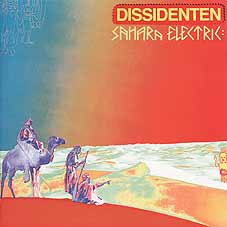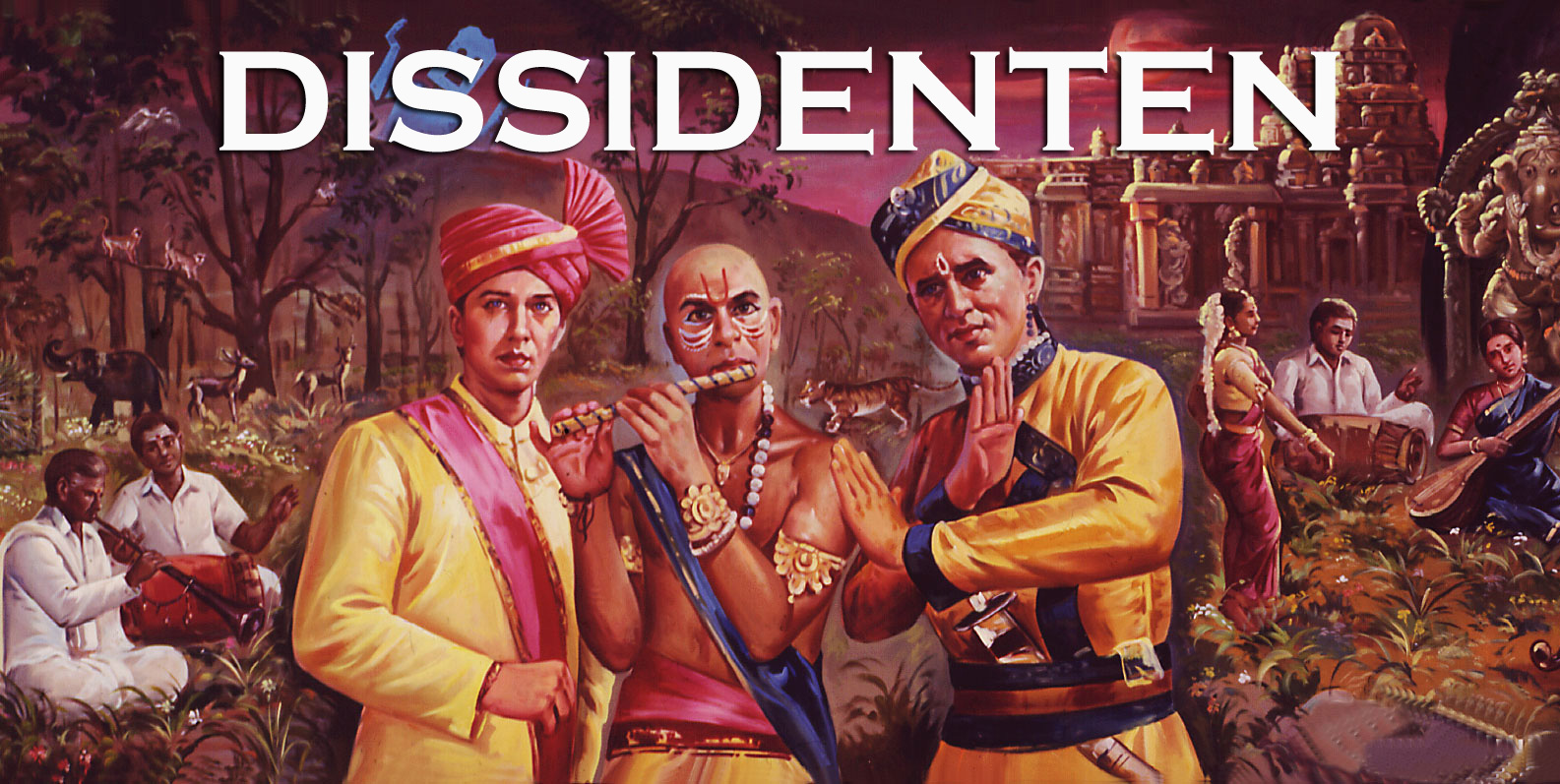DISSIDENTEN & LEM CHAHEB
– Sahara Elektrik –
This album is the Bible or the Koran of Ethno-Beat or World Music, the one that marks the birth of the genre. It’s an extraordinary piece of work, released in 1984, in which a group of blond German rockers worked alongside and on equal footing with another group of darker-complexioned Moroccans who were already considered ahead of their time in Morocco. It is Dissidenten’s second album. Their first one, Germanistan, recorded in 1981 with the Karnataka College of Percussion, served as the training ground for working in Tangiers on this, their seminal achievement and the most influential album of the last twenty years. A sleeve inside the original German vinyl cover described its music as Ethno-Beat, of which a loose translation into Spanish is Ritmos Étnicos . As an anecdote, that album was to inspire the author of this text to produce a program in Radio 3 called Disiden-3, from which Discópolis later stemmed.
The Rhythms of the World
The album Sahara Elektrik, performed by Dissidenten together with Lem Chaheb, was released in Berlin in February 1984. This album, recorded on the German label Exil, changed the course of contemporary popular music. It was the first time that a work merged together two distinct types of music originating from different cultures without one prevailing over the other. It was a progressive approach since it used rock music’s most innovative language at the time together with the most open and cosmopolitan facets of Maghrebian music.
There are previous examples documenting similar efforts in the past. Some are rooted in jazz (John Coltrane, Miles Davis, Herbie Mann…), yet most are rock-based (Santana, Odibisa, Mick Fleetwood…). Similarly in Spain, Los Pasos recorded a curious single entitled Habibi in 1969, and later Triana or Imán Califato Independiente released works along the same lines, all of which were very intriguing. These endeavors are called “rock with roots”, a style of rock incorporating ethnic flourishes but with no desire to go beyond that, as the ethnic ornamentation was set upon a solid rock foundation.
Meanwhile in Africa itself, Fela Anikilapo Kuti was working on a new concept called Afrobeat, where he combined jazz and indigenous elements. In Senegal, the Touré Kunda group was doing the same based on reggae. These explorations continued and blossomed in 1984 with the recording of Sahara Elektrik, which was released months earlier than two other similar albums: Congolese Ray Lema’s Medicine, and Touré Kunda’s Natalie. All three sought to find a new egalitarian language for the diverse styles incorporated. Of these, Sahara Elektrik stood out the most for its innovative forms of expression, which were danceable and very accessible.
From there on out a field of almost infinite possibilities opened up with a myriad of surprising fusions which are still being created today.
In 1984, as the people of Spain were enjoying la movida (the Madrid movement), this new genre went unnoticed among the reigning post-modernity. Worldwide, the rock audience was competing with punk, the sounds of new wave, or techno-pop. The hippies gave way to the yuppies. Utopia had been buried and in its place came the technocrats and stockbrokers who reveled in the new age. In Madrid as in Silicon Valley, cellophane and packaging were more important than essence. Yet, many rock fans embraced the new genre precisely because it was grounded in the authentic and the creative, while re-inventing the language of its expression.
José Miguel López
(Translated from the original Spanish by Carolingua)


Trying to secure a clean CD, even if used, of SAHARA ELEKTRIK. Any suggestions deeply
appreciated. I heard them once in New York at SOB’s — Sounds of Brazil, in the West Village —
and want to share some of their music with a friend in the UK.
Thanks.
Hi,
I picked up Sahara Elektrik at Tower Records in NYC in 1997 because I thought the cover was cool. When i brought it home it was as interesting as the cover. I love the album and all the songs on it. I’m just a kid from New Jersey, USA, but I doubt diissidenten ever plays here in the states. It would be the best though! Really happy that i found this website. Very cool to see the videos. I am a musician and I have jammed some dissidenten with an acoustic guitar, violin, and dumbek. with some friends.
Anyway, this site has inspired me to start listening to some more dissidenten.
Thank you very much,
your fan,
robbie
In the world before Internet, somehow I stumbled onto Sahara Electrik – on cassette tape!(I might have heard it on one of those pirate radio stations back in the day) When it wore out, I got in on CD. Now it’s an iTunes file on my iPhone. It’s so good to listen to musicians that can survive every iteration of playback technology! My only regret is not having the liner notes – I love the poetry and when I gave away my CD, the notes went with it 🙁
I was lucky enough to see Dissidenten live in a small club on Bank Street in Ottawa, Canada in around 1987 or ’88. I will always remember the wild gyrations of their flute player, and the beautiful sound of the song Sahara Electrik.
Can someone, please, post the correct translation of all songs of Sahara Electrik into English?
If not all of the songs, at least Fatamorgana…
Thanks in advance.